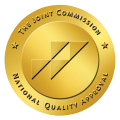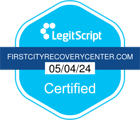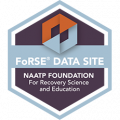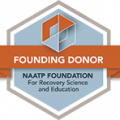Many people worry about the social aspect of substance consumption when they first decide to take on a life of sobriety. They may worry about not having anything to do at parties, or what their friends may think. There can be a very real fear that their social life will change or will be less fun or exciting once they decide to be sober.
As a result, some people choose to substitute one substance for another in social situations (or in general). One such method for doing this is the California Sober lifestyle, a sobriety lifestyle trend that entered the mainstream at roughly the same time that the state of California legalized the use of recreational marijuana.
However, despite the word “sober” being part of the name, this lifestyle choice doesn’t prescribe pure sobriety. It doesn’t provide any lessons in addiction recovery that sobriety or a recovery program can provide. The California Sober lifestyle is viewed as an alternative to complete abstinence from addictive substances. But this is a much more complicated subject, and should be examined very carefully if an individual is looking to reduce substance use.
What Does it Mean to be “California Sober”?
A California Sober lifestyle means to cut out alcohol entirely and replace it with marijuana. This is especially relevant in social situations, and is meant to address the isolation some people may feel when becoming sober. If they’re lighting up a joint or bowl when everyone else is enjoying a beer, it’s perceived that there is less social tension.
However, it is important to note that being California Sober does not exclude other forms of addictive substances. Individuals who take on a California Sober lifestyle still consume cannabis products, of course. But they may also consume hallucinogens, benzos, or even methamphetamine and still be California Sober. There are no true benefits of sobriety to enjoy, because it isn’t true sobriety from addictive substances.
The Dangers of The California Sober Lifestyle
The California Sober lifestyle is considered by many to be a relapse prevention technique for alcohol addiction. But it doesn’t necessarily help heal from an addiction to alcohol.
Here are some of the other potential downsides of a California Sober lifestyle:
- Not treating the real problems/root issues: Taking on a California Sober lifestyle is perceived as a way to ensure that there will be a fallback when the individual is tempted to consume alcohol. But there isn’t an active effort to delve deep and discover why the person is consuming alcohol to the point of addiction. Without this internal work, there’s every possibility that cannabis (or another substance) could take the place of alcohol as a substance of addiction.
- Potential for addiction to cannabis: While marijuana has less potential for immediate bodily harm, it’s not a completely harmless substance. There is still potential for addiction due to its structure and cultural patterns of consumption. Depending on the person and their habits, it’s possible to substitute one addiction for another in taking on the California Sober lifestyle.
- No medical supervision: Detox from addictive substances isn’t a simple process, and medical complications can result from trying to quit substances without preparation or planning. Cannabis (or any other substance) is not an effective replacement for the medication that may be necessary for a healthy and effective detoxification of alcohol.
- Falling back into old habits: Many people choose a California Sober lifestyle as a way to reduce their consumption of alcohol. While this has good intentions attached, it’s not setting true boundaries in sobriety. It’s very possible to fall into patterns of addiction with cannabis, or to make allowances regarding other substances. If the entire point is to impose boundaries around a particular substance, it becomes easy to have no restrictions regarding others.
- “Natural” substances are not always safer: One common defense of marijuana is that because it’s naturally derived from the cannabis sativa plant, it’s inherently safer for the human body than a substance with more chemical additives. This logic may also extend to substances like magic mushrooms (another oft-permitted substance to those following a California Sober lifestyle). However, this logic doesn’t remove the addictive properties of cannabis. It also isn’t true for other common “acceptable” California Sober substances such as ketamine and LSD. These are derived from the drug PCP and aspects of the ergot fungus added to other chemicals, respectfully.
- Failure to properly dose cannabis: Because of its reputation as a “gentle” addictive substance, it can be easy to underestimate the strength of modern cannabis. But the cannabis of modern legalization is much higher in THC than that grown and circulated during the times of illegality. Individuals who start consuming cannabis may vastly underestimate how much the cannabis will affect them, simply because the “common knowledge” they’ve received about how to consume cannabis is no longer relevant.
- No effort toward moderation: The core idea behind a California Sober lifestyle is to substitute a different substance for alcohol in a 1-to-1 manner. This doesn’t involve any reduction in consumption, except for that of alcohol. There isn’t any work to moderate the consumption of addictive substances in general, or to examine why the use of the substances went up over time.
- Self-medication: Using substances to alter one’s mood (or to alleviate stress) is a harmful pattern regardless of what substance is used. As a substance with psychedelic properties, cannabis has enormous potential to be used for this purpose. Adding in its capabilities for pain reduction and situation-dependent calming effects, cannabis can very easily become a tool for self-medication (and thus addiction).
- No solid guidelines: Sobriety is pretty straightforward for most people — it means to have absolutely none of a certain substance. But the California Sober lifestyle does not have standard guidelines, apart from no alcohol. It’s very easy to make allowances when taking on a system with no universal guidelines, and thus no ability to make helpful comparisons or to know when you’ve “failed.”
- Pivoting to harder or more destructive substances: There are many addictive “party drugs” besides alcohol that may emerge in social situations. In trying to avoid alcohol, a person may be inspired to try drugs such as cocaine or prescription pills. In taking a substance completely unknown to their body (but still in withdrawal from another one), an individual puts themselves at risk of an overdose or poor reaction.
Depending on the severity, it’s up to the individual to decide how to go about healing from their addiction. But the California Sober lifestyle doesn’t eliminate the possibility of relapse, nor are there any benefits that take the place of the substance entirely.
Does The California Sober Lifestyle Work For Harm Reduction?

The principles of harm reduction state that if complete healing isn’t possible, it’s important to alleviate as much harm as possible. For example, someone suffering from a terminal disease may never be completely cured. But measures can be taken to alleviate their pain and keep them lucid enough to interact with others on a regular basis.
But the California Sober lifestyle doesn’t completely shield a person from harm. As always, there’s also always the possibility of withdrawal symptoms when someone attempts to quit a substance “cold turkey.” Other addictive substances may not help relieve these symptoms, nor may they provide the function alcohol may have served in the person’s life (or in their body). Withdrawal from alcohol may still be uncomfortable even if another substance is taking its place.
How Sober Living Can Help Avoid Relapse
The truth is that actively working to treat addiction is the only way to fully treat alcohol use disorder. This often means a direct change in routine and no direct substitutions for alcohol. Instead, people must learn how to have fun and develop healthy coping mechanisms that don’t depend on substances whatsoever.
This rebuilding of habits and routine is exactly the purpose of a sober living house. These facilities, built for full-time living, focus on providing a substance-free atmosphere and actively supporting those who want to live a sober lifestyle. There are often regular activities scheduled, as well as helpful resources for sobriety like 12-step programs.
Sobriety homes actively answer the problems that the California Sober lifestyle is designed around: social support and fear of alienation. But instead of conforming to a setting and expectation of using substances, people are living among other people who also want to stay sober. It’s an atmosphere of learning, where the skills of how to get along without alcohol last longer than just one night.
Achieve Long-term Sobriety At Monroe Street Housing
At Monroe Street Housing, we’re committed to providing a sober living environment that’s conducive to long-term growth. We provide aftercare services that help individuals healthfully endure the effects of detox and build skills that won’t lead to relapse. Contact us today and start your journey toward a life of healing and sustained sobriety that lasts.














